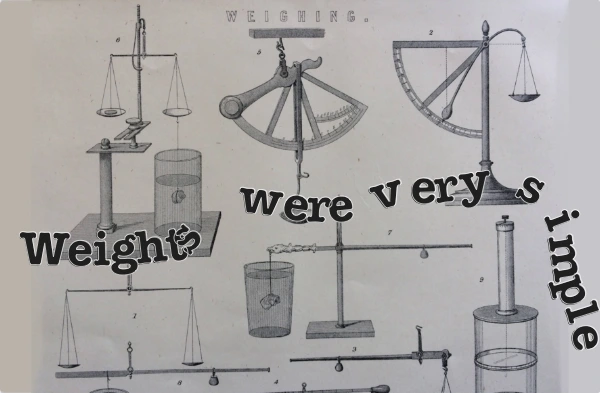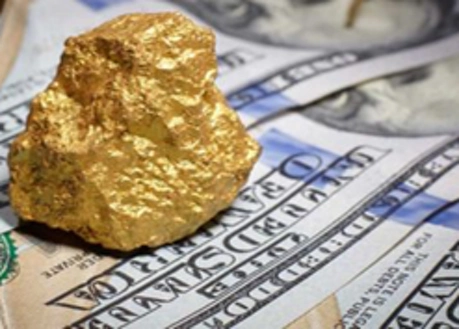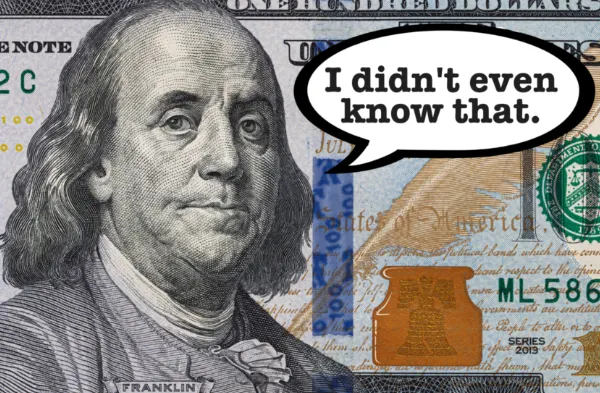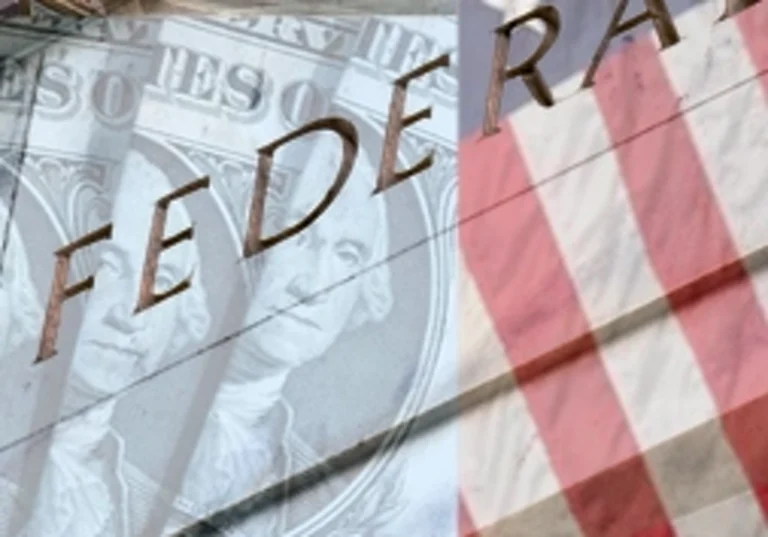
Gold Panic FOMO Peaking Now or Still Coming? Safe Haven Metal Settles the Score
In the financial realm, it’s not every day that we witness a spectacle akin to the late stages of a Tour de France leg, especially when it comes to the value of gold. Picture this: Gold racing up a steep hill, hitting an all-time high at $2,084.50 (spot price) on December 27, 2023, only to experience a sudden plateau at $2,077. It’s akin to the adrenaline rush of jumping out of an airplane – the excitement, the nerves, and the pressing question: Is now the time to buy, or should one wait?
Breathe. We understand the rollercoaster of emotions that comes with tracking gold prices. Safe Haven Metal is here to guide you through the peaks and plateaus, providing evidence to help you discern the opportune moment to make your move.
Driving a car by fixating on the space just two feet in front of the hood is nerve-wracking, useless, and downright dangerous. Similarly, navigating the gold market requires looking down the road and strategically planning your moves. Safe Haven Metal encourages you to adopt the basic rules of the financial road – knowing when to swerve, when to hit the curve, when to tap the brakes, and when to pump the gas.
Gone are the days of chasing the thrill of a fast Mustang or a sleek Corvette. While these cars are undeniably beautiful, the practicalities of exorbitant tickets and insurance costs often temper our desires. For many, stability and safety have become the new pride in ownership, and that’s precisely what gold brings to one’s retirement portfolio.
The Past Proves the Future
Gold, a tier one asset, has served as the bedrock of wealth for millennia. It acts as a hedge against inflation, provides stability during market turmoil, and occasionally delivers spikes in profits. Yet, its true strength lies in its ability to avert losses. As purchasing power plummets for others, those holding gold inherently bolster their overall value by not succumbing to the same descent.
So, why is gold experiencing such a surge in value? The recent peak, hitting $2,084.50, has left many wondering about the factors driving this remarkable ascent. It’s not just a random occurrence – there’s a story unfolding on the global economic stage.
Enter the US digital currency shift. With the impending move towards digital currency, gold has become a focal point for investors and central banks alike. Central banks, anticipating the transition and the uncertainties it brings, are engaging in record-breaking acquisitions of gold. The rush to secure this precious metal is not just about wealth preservation; it’s a strategic move to ensure stability in the face of a rapidly changing financial landscape.
The Year of Gold is Now
As we enter the year ’24, the play on words with 24k gold takes on added significance. Safe Haven Metal stands as a beacon in these uncertain times, guiding investors through the intricacies of the gold market. The company’s commitment to providing valuable insights and evidence-based strategies empowers individuals to navigate the fluctuations with confidence.
The value of gold and silver in ’24, particularly in the context of Safe Haven Metal, extends beyond mere market trends. It encapsulates a narrative of resilience, strategic foresight, and the enduring allure of precious metals in safeguarding wealth. Whether you’re a seasoned investor or a newcomer, understanding the dynamics at play will undoubtedly shape your journey in this exciting era of economic evolution.
Comparing Gold vs. Silver
Overview of Precious Metals Options
Precious metals have long been considered attractive asset options due to their intrinsic value, stability, and historical significance. Among the various precious metals, gold and silver stand out as prominent choices for those seeking to diversify their portfolios and preserve wealth.
Exploring the Pros and Cons of Gold and Silver
The primary objective of this article is to provide readers with a comprehensive analysis of the value of gold and silver assets. We aim to explore the distinctive characteristics, advantages, and disadvantages of each desirable metal. Allowing readers to make informative decisions on their financial goals and risk tolerance.
Acquiring precious metals requires careful consideration. For asset protection strategy, they serve to hedge against inflation, currency fluctuations, and economic uncertainties. It is essential to recognize that each metal has unique attributes that influence its investment potential. Making it crucial to understand the factors that impact their value.
Maintaining Neutrality
We do not have a preference in the gold vs. silver debate, that would be like asking which is our favorite child. They blossom in different ways.
By examining the merits and drawbacks of both metals, you will gain a deeper understanding the value of gold and silver. How these precious metals can fit into your portfolio, contributing to long-term financial objectives.
Definition of Volatility
In common speech the word volatility has one usage. Oxford defines volatility: “liability to change rapidly and unpredictably, especially for the worse”. Merriam-Webster on volatility, defers to volatile:
- 1. a: characterized by or subject to rapid or unexpected change
- b: unable to hold the attention fixed because of an inherent lightness or fickleness of disposition
- 2. a: tending to erupt into violence : explosive
- b: easily aroused
- c: lighthearted, lively
- 3: readily vaporizable at a relatively low temperature
- 4: difficult to capture or hold permanently : evanescent, transitory
- 5: flying or having the power to fly
We have never heard it used in the flying sense, but we learn something new every day. Which is why we are here. So when we are discussing the value of gold and silver, it is important to know that volatility differs in meaning, when discussing finance.
In finance volatility basically means, change. Volatility is often measured from either the standard deviation or variance between returns from that same security or market index. For example, when the stock market rises and falls more than one percent over a sustained period of time, it is called a volatile market.
- Volatility represents how large an asset’s prices swing around the mean price—it is a statistical measure of it’s differing returns.
- Volatile assets are often considered riskier than less volatile assets because the price is expected to be less predictable.
- Implied volatility measures how volatile the market will be while historical volatility measures price changes over predetermined periods of time
- Volatility is an important variable for calculating options prices.
Understanding the Appeal Helps to Understand the Value of Gold and Silver
Historical Significance and Safe-Haven Status of Gold
Gold’s allure as a precious metal stems from its rich history as a store of value and a medium of exchange. Throughout the ages, civilizations prize gold for its scarcity, durability, and universal acceptance. In times of economic uncertainty, geopolitical tensions, and market volatility, gold serves as a tier 1 safe-haven asset.
Investors turn to gold during turbulent periods as a means of protecting their wealth from inflation and currency devaluation. Its historical track record of retaining value, even during economic downturns, has solidified its reputation as a reliable store of wealth. Additionally, central banks and governments hold significant gold reserves, further reinforcing its status as an asset of trust.
Industrial and Economic Importance of Silver
Silver, like gold, has enjoyed historical significance. Playing a vital role in various civilizations as a form of currency and ornamentation. However, silver’s appeal extends beyond its monetary value. Silver boasts a unique position as a precious metal with industrial utility.
Silver’s industrial applications are vast. As it serves a crucial component in the manufacturing of electronics, solar panels, medical equipment, and various other technological products. As the global economy advances and technology continues to evolve, the demand for silver is expected to grow, potentially creating a strong foundation for its value.
Gold vs. Silver Price Performance and Volatility
When comparing the value of gold and silver as assets, their price performance and volatility patterns warrant consideration. Historically, gold has shown more stability in terms of price comparatively to that of silver. This characteristic makes gold particularly attractive to conservatives seeking a safe-haven asset with relatively lower price fluctuations.
On the other hand, silver’s price movements tend to be more volatile due to its industrial demand and supply dynamics. During periods of economic growth and market optimism, silver prices may experience upward surges. Conversely, economic slowdowns and oversupply concerns can lead to temporary price declines.
Both gold and silver have their unique allure as precious metals with historical significance and diverse applications. Gold’s safe-haven status and stability appeal to risk-averse investors, while silver’s dual role as a precious metal and industrial commodity offers the potential for greater growth but with increased price volatility. Therefore carefully assess risk tolerance and long-term objectives to determine how the value of gold and silver align with an overall portfolio strategy.

Factors Influencing the Value of Gold and Silver
Purchasing precious metals requires a deep understanding of the various factors that can influence their value. Both gold and silver prices are subject to a complex interplay of global economic conditions, market sentiments, and industrial demand. In this section, we explore the key factors that impact the value of these precious metals.
Global Economic Conditions and Monetary Policies
The value of gold and silver is closely tied to the overall state of the global economy. During periods of economic uncertainty or recession, investors often seek the safety of precious metals, especially gold, leading to increased demand and upward pressure on prices. Conversely, during times of economic growth and stability, the appeal of riskier assets may overshadow precious metals, causing their prices to experience downward corrections.
Implementation of monetary policies, such as interest rate changes and quantitative easing, by central banks also influence precious metals’ value. Lower interest rates and expansionary monetary measures tend to weaken the currency, making the value of gold and silver more attractive as “stores of value”. Conversely, higher interest rates can strengthen the currency and potentially lead to decrease in market demand for precious metals.
Inflation and Currency Fluctuations
One of the primary drivers of interest in precious metals is their role as a hedge against inflation. Inflation erodes the purchasing power of fiat currencies, making assets like gold and silver more appealing for wealth preservation. As investors seek protection from rising prices, demand for precious metals tends to rise, influencing their prices upward.
Additionally, currency fluctuations play a significant role in determining the value of gold and silver. Especially since globally trading of the commodities gold and silver are priced in US dollars. Changes in exchange rates between major currencies can impact demand for precious metals from different regions and influence their prices accordingly.
Gold vs. Silver Industrial Demand
Silver’s unique characteristic as both a precious metal and an industrial commodity makes its value particularly sensitive to industrial demand. Technological advancements, especially in electronics and renewable energy sectors, can significantly influence silver’s price. Increase demand for electronic devices and solar panels can drive up silver consumption and, consequently, its price.
Gold, while having some industrial uses, does not rely as heavily on industrial demand as silver does. Instead, gold’s value is primarily derived from its status as a safe-haven asset and store of value during times of economic uncertainty.
Geopolitical Uncertainty and Market Sentiments
Geopolitical tensions and uncertainties can create volatility in financial markets. Leading investors to seek refuge in safe-haven assets like gold. Events such as political instability, trade disputes, or geopolitical conflicts can trigger fluctuations in precious metals prices.
Market confidence, risk appetite, and speculation, also play a role in determining the short-term price movements of gold and silver. News and developments that impact overall market confidence can influence investor behavior, affecting demand for precious metals.
Influencing the value of gold and silver, is a complex interplay of global economic conditions, monetary policies, inflation, currency fluctuations, industrial demand, geopolitical events, and market sentiments. Understanding these factors is crucial for anyone seeking to make informative decisions about gold vs. silver in their asset portfolios. As with everything, careful analysis and risk assessment are essential for aligning precious metal acquisitions with individual financial goals and preferences.
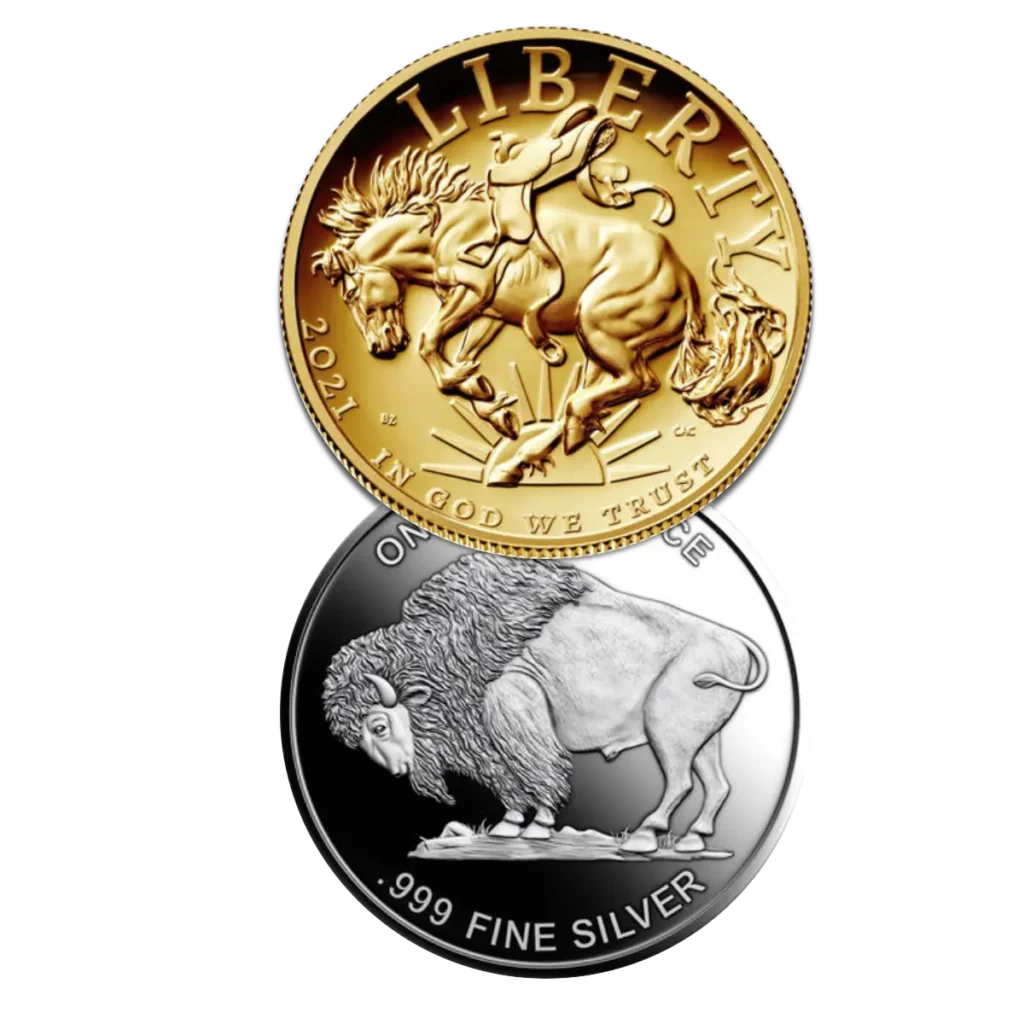
Diversification Benefits of Precious Metals
Role of Gold and Silver in Portfolio Hedging
One of the key values of both gold and silver is their roles as a diversification tool. Diversification is a risk management strategy that involves spreading investments across different asset classes to reduce overall portfolio volatility. Precious metals, particularly gold and silver, have shown a historical tendency to behave differently from common financial assets like stocks and bonds.
During times of economic downturns, stock market crashes, or geopolitical crises, the value of many financial assets can experience significant declines. However, precious metals, especially gold, historically demonstrate a negative correlation with these events. Meaning their prices are prone to rise or remain stable when common investments falter. This inverse relationship can help offset losses in other parts of the portfolio, acting as a hedge and providing a measure of stability.
Gold vs. Silver Correlation Analysis
Correlation analysis is a quantitative method to measure the degree of relationship between different assets in a portfolio. A correlation coefficient ranges from -1 to 1. With -1 indicating a perfect negative correlation (i.e., assets move in opposite directions). While 1 indicates a perfect positive correlation (i.e., assets move in the same direction). And 0 indicating no correlation.
Historically, Gold exhibits low to negative correlations with stocks and bonds. During periods of economic turbulence or a heightening of market uncertainty, investors tend to the safety of gold. Leading to an increase in demand and price. As a result, gold’s negative or low correlation with equities and bonds enhances its diversification potential in a portfolio.
Silver, being both a precious metal and an industrial commodity, may show a moderate positive correlation with certain equity sectors. For example, during economic expansions or periods of robust industrial growth, silver’s demand for industrial applications can cause its price to move in tandem with specific sectors of the stock market. However, silver’s dual role still allows it to provide some diversification benefits in a portfolio.
Considerations for Blending Gold and Silver in a Portfolio
While both gold and silver offer value to a portfolio, their distinct characteristics and price behavior may warrant consideration for a blended approach in a portfolio. Combining the value of gold and silver creates balance. This dual exposure potentially optimizing the diversification benefits.
Those with higher risk tolerance may trend to allocation of a larger percentage of their precious metal portfolio to silver. Silver’s potential for price appreciation due to its industrial applications could provide an additional growth component to the portfolio. On the other hand, if more stability and wealth preservation is preferable, a higher allocation to gold is logical.
Adjusting the blend of gold and silver in a portfolio to one’s risk profile, objectives, and market outlook equally is sound. Regular rebalancing of the precious metal allocation ensures that the portfolio stays in alignment with long-term goals and risk tolerance is key.
Emphasizing Diversification for a Robust Portfolio
It does not always have to be “gold vs. silver”, as both can play a vital role in enhancing portfolio diversification and managing risk. The value of gold and silver includes potential benefits in safeguarding wealth during economic uncertainties. The negative or low correlation of gold with common financial assets, along with silver’s potential for growth and industrial demand, makes them complementary components in a well-diversified investment strategy in one’s precious metal IRA.
However, it is essential to remember that no financial vehicle is entirely risk-free. Past performance does not indicative when future results will arrive. The history of these precious metals informs of overall growth, but when to act can never be foretold. Carefully evaluate financial objectives, time horizon, and risk tolerance before incorporating precious metals into a portfolio.
Summation
When weighing gold vs. silver, you must first define your goals and time horizon. Clarifying these aspects will help determine the appropriate role of precious metals and the overall value that gold and silver can add to the portfolio overall.
- Preservation of Wealth: If the primary objective is to preserve wealth and protect against economic uncertainties, the value of both gold and silver can serve as potential safe-haven assets. Gold’s historical track record as a store of value makes it a popular choice for wealth preservation, especially during times of market turbulence. Silver, with its dual role and potential for growth, can complement gold in achieving this goal.
- Portfolio Diversification: Those seeking to diversify their portfolios and reduce overall risk can consider incorporating both gold and silver. The negative or low correlation of precious metals with common assets can provide stability and act as a hedge during market downturns.
- Growth and Speculative Returns: For those with a higher risk tolerance and a desire for growth opportunities, silver’s industrial demand and potential for price appreciation may be appealing. Silver’s unique characteristics make it more susceptible to short-term price volatility, but it also presents the possibility of higher returns in favorable market conditions.
Whatever your decision shall be, its most important to make the decision and take action. Proactive efforts to protect your wealth, is solid gold. If you read this entire article to learn about Gold vs. Silver, then you get the importance of the value of gold and silver. If you want to learn more about the Central Banks’ impact on your IRA as it relates to the upcoming digital currency shift, then request our free gold kit. Containing the coveted Safe Haven Metal Special Report – Central Banks.

